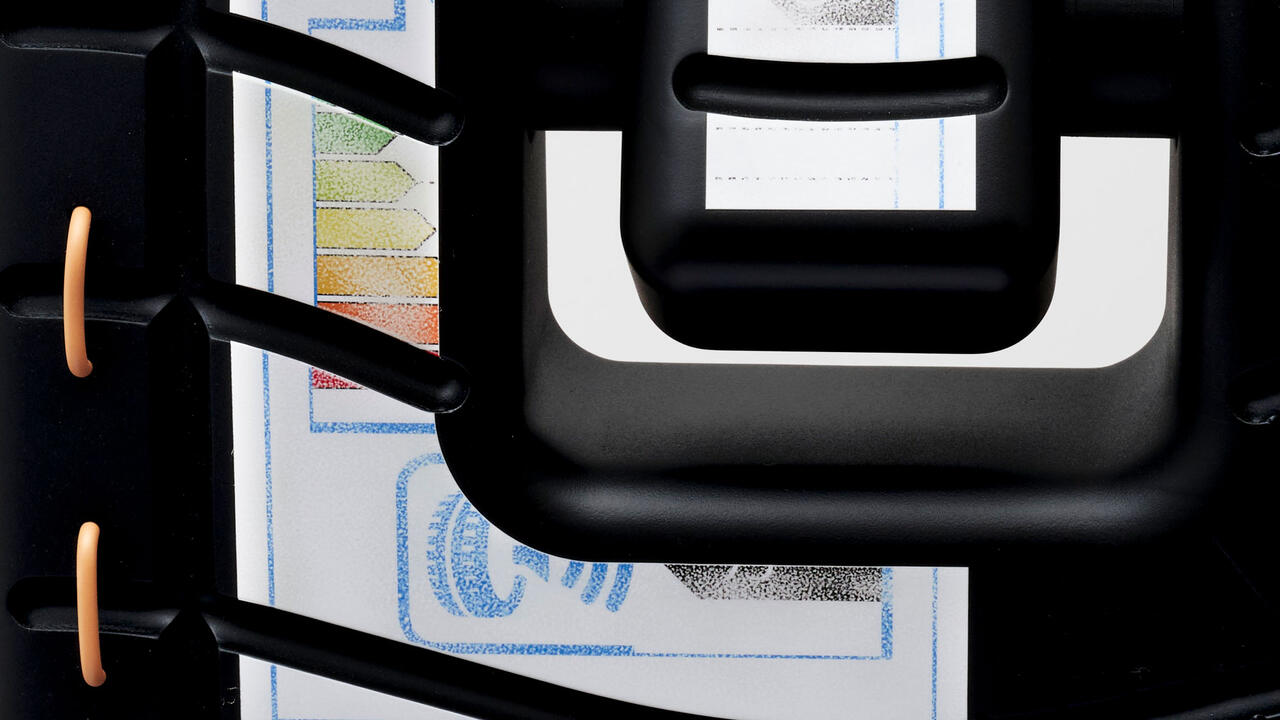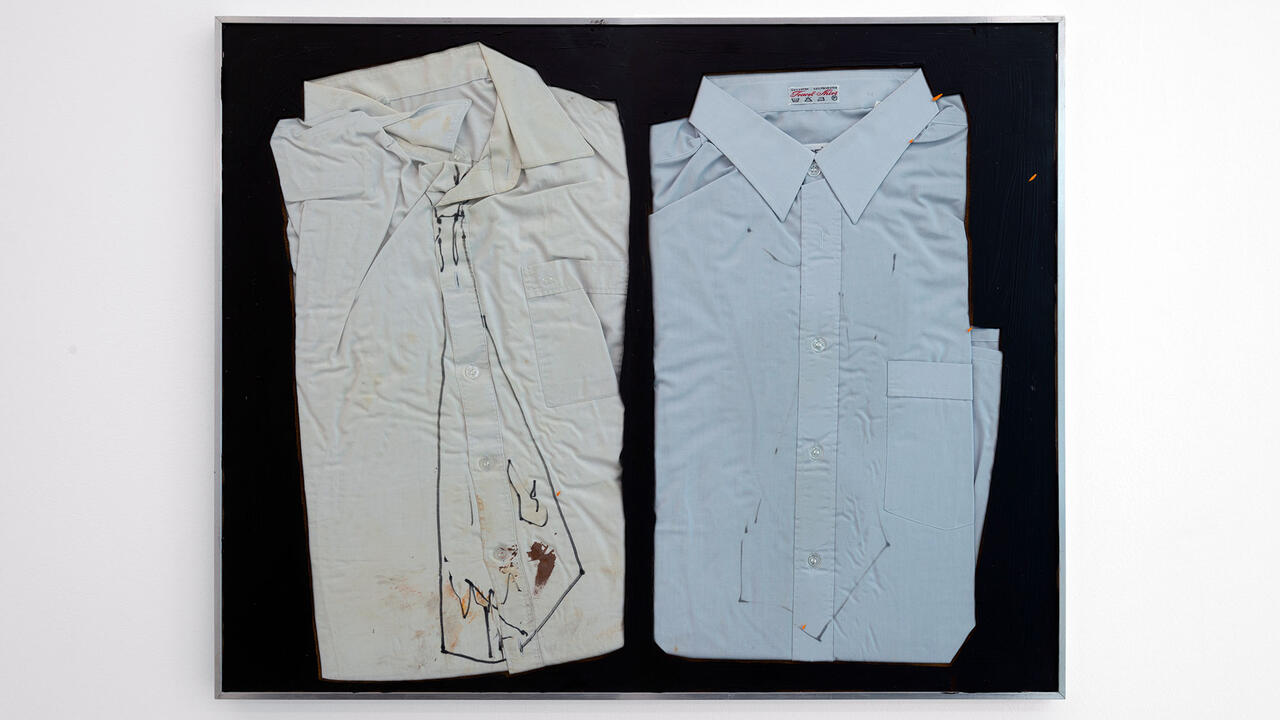Ellen Harvey

The world is dead. Its cities lie in ruins. An unknown disaster has destroyed all evidence of mankind. All, that is, except for the crumbling buildings. And then the aliens arrive. Such is the delightfully odd nature of ‘The Alien’s Guide to the Ruins of Washington, D.C.’, Ellen Harvey’s small but sweet show at the Corcoran Gallery of Art, that the usual laser-gun-toting harbingers of earthly ruin have now become its somewhat confused post-disaster excavators. Faced with only the world’s architecture from which to draw their conclusions, the aliens’ quite understandable belief is that the one unifying constant that tied all mankind together in a global brotherhood was … the pillar. Such is the starting point for a show that is less bleakly dystopian than happily deranged.
In the aliens’ reading of events, the earth was populated by ‘Pillar-Builders’. This peculiar ocean-based species swam up rivers and constructed ‘Pillar-Things’ on dry land, like turtles coming ashore to bury their eggs. This, we are informed, was part of an ancient flirtation ritual. The pillars came in three shapes: ‘Boring’, ‘Frilly’ and ‘Very Frilly’ (or, in human terms, Doric, Ionian and Corinthian). For sheer quantity, there is, in the aliens’ minds, no greater concentration of them than in that neo-classical city par excellence, Washington, D.C., whose ruins look no different to the aliens than those of Athens or Rome.
The aliens thus reverse-engineer an absurd portrait of Washington transmuted through their columnacentric minds. The Houses of Congress becomes ‘The Really Complicated Pillar-Thing’, a place for ‘stroking after mealtimes, or singing’. The White House becomes ‘The Oval/Triangle Pillar-Thing’, used for ‘intimate orientation dances’. The Washington Monument is simply ‘The Really Big Pillar’, which, in conjunction with the nearby National World War II Memorial (‘The Oval Pillar-Circle’) becomes a sundial ‘to determine proper flirtation seasons’. Bizarre though the portrait is, the language the aliens use to describe the ruins (‘triangle-topped’, ‘attached rectangles’, ‘frilly pillars’) may well ring true with anyone not entirely up to speed with their classical architectural vocabulary.
But what does all this ludicrous mythology amount to? What are the aliens doing with this knowledge? Basically the same thing that is being done with the city today: turning it into a tourist trap. The Alien Souvenir Stand (2013) exactly resembles the many hotdog stands that can be found on the city’s streets catering to hungry and bewildered tourists, except in this case the hand-painted pictures of pretzels and half-smoke sausages have been replaced by 150 monochromatic oils and watercolours of the city in ruins. It’s a beautiful throwaway that, as the curator Sarah Newman writes, plays with Harvey’s perennial concerns which ‘the timeless is always already tawdry and […] enchantment and cliché slide easily into one another’.
Meanwhile, 12,000 copies of The Alien’s Guide to the Ruins of Washington D.C. (2013), a foldout map displaying the ruined monuments and spelling out the aliens’ bizarre theories, have been distributed throughout D.C.’s hotels in a tactic that is sure to confuse tourists from Ohio to Osaka. Then again, as the tourists trundle from one giant neo-classical repository of rare and valuable artefacts to another, their contents blurring together, perhaps more than one tourist will feel a kinship with their alien visitors as they desperately struggle for coherence and understanding.
Immersing the viewer in her work is nothing new for Harvey, who has looked into the future and seen ruins there before. In Mirror (2006), she transformed the interior of the Pennsylvania Academy of the Fine Arts in Philadelphia with mirrored panelling that not only reflected the viewer back at themselves but also portrayed the surrounding museum as derelict and boarded up. In 2011, she created Arcade/Arcadia, a replica of the painter J.M.W. Turner’s 19th-century gallery in London and filled it with pictures of his sometime home of Margate as it is today – derelict and in disrepair – as a counterpoint to its Romantically configured past.
At the Corcoran, Harvey parlays her bizarre Douglas Adams-like scenario into a study of the arbitrary way in which classical architecture has become the language of power for civilizations over the last 2,000 years. This is most spectacularly on display in The Pillar-Builder Archive (2013), a room in which some 4,000 postcards of classical and neo-classical buildings have been linked using the alien’s warped methodology. From obelisks to amphitheatres, through rotundas, porticos and parthenons, Harvey shows the continuum of classical architecture spreading across time and place, linking the birthplace of democracy with the high temples of fascism, expansive mansions with humble churches, Lenin’s tomb with the White House. Harvey, an alien herself – she was born in the UK before moving to the US in the 1990s – doesn’t seem to draw a grand conclusion from all this. Or rather she draws many small conclusions. The show hints at being a critique of patriarchal priapism, of curatorial floundering, of American imperialism, but it also ends up being something more interesting than this. For Harvey prefers to show the way that the classical has, like a virus, embedded itself into our world, our vocabularies of power, even our myths. In Alien Rocket-Ship (2013), a giant one-liner that inhabits the gallery’s grand classical rotunda, she shows simply a column with a metal cone on top. Even the aliens, it seems, stand no chance.














